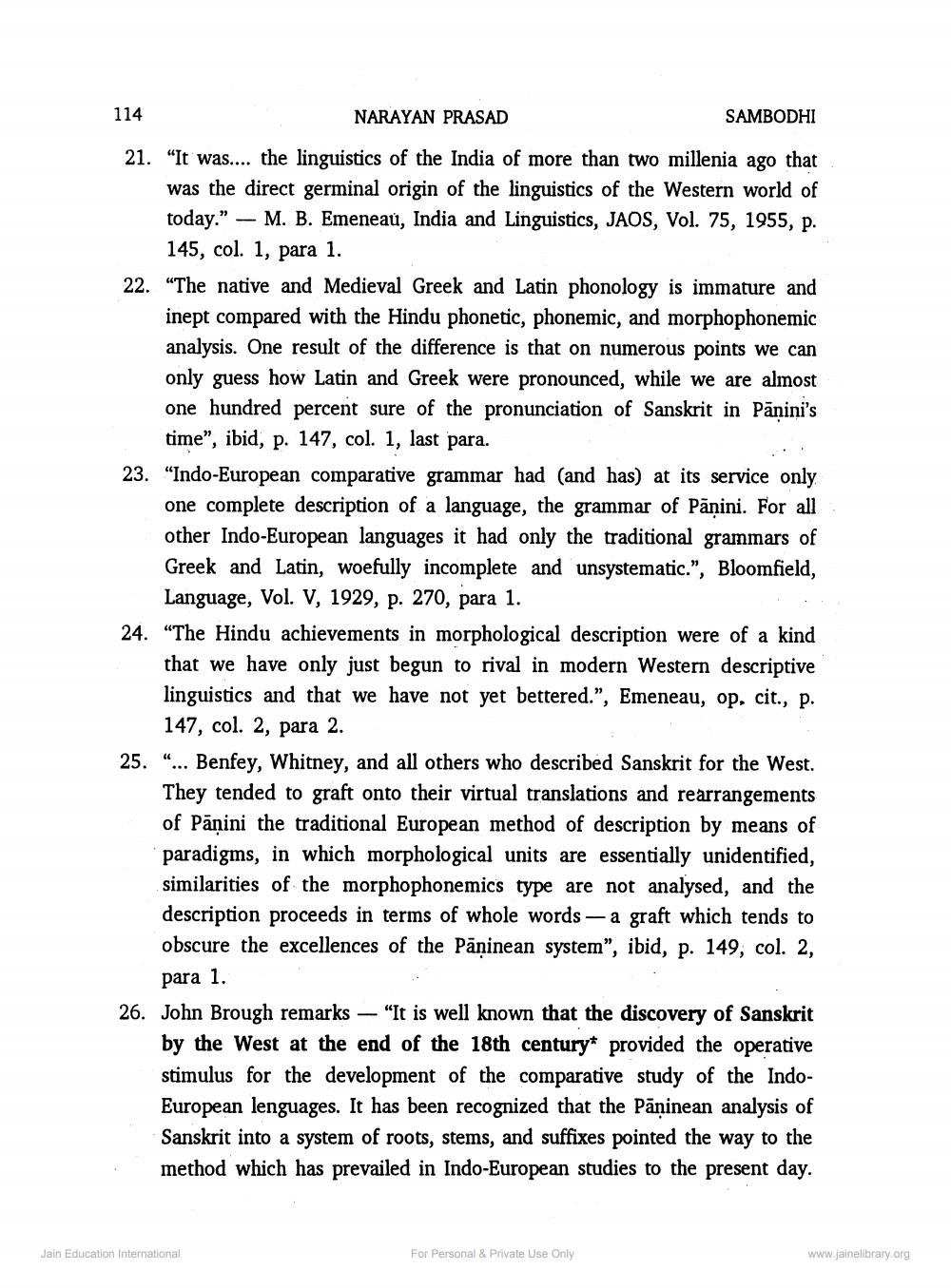________________
114
NARAYAN PRASAD
SAMBODHI
21. "It was.... the linguistics of the India of more than two millenia ago that was the direct germinal origin of the linguistics of the Western world of today." - M. B. Emeneau, India and Linguistics, JAOS, Vol. 75, 1955, p. 145, col. 1, para 1.
22. "The native and Medieval Greek and Latin phonology is immature and inept compared with the Hindu phonetic, phonemic, and morphophonemic analysis. One result of the difference is that on numerous points we can only guess how Latin and Greek were pronounced, while we are almost one hundred percent sure of the pronunciation of Sanskrit in Panini's time", ibid, p. 147, col. 1, last para.
23. "Indo-European comparative grammar had (and has) at its service only one complete description of a language, the grammar of Panini. For all other Indo-European languages it had only the traditional grammars of Greek and Latin, woefully incomplete and unsystematic.", Bloomfield, Language, Vol. V, 1929, p. 270, para 1.
24. "The Hindu achievements in morphological description were of a kind that we have only just begun to rival in modern Western descriptive linguistics and that we have not yet bettered.", Emeneau, op. cit., p. 147, col. 2, para 2.
25. "... Benfey, Whitney, and all others who described Sanskrit for the West. They tended to graft onto their virtual translations and rearrangements of Panini the traditional European method of description by means of paradigms, in which morphological units are essentially unidentified, similarities of the morphophonemics type are not analysed, and the description proceeds in terms of whole words - a graft which tends to obscure the excellences of the Paninean system", ibid, p. 149, col. 2, para 1.
26. John Brough remarks - "It is well known that the discovery of Sanskrit by the West at the end of the 18th century* provided the operative stimulus for the development of the comparative study of the IndoEuropean lenguages. It has been recognized that the Paninean analysis of Sanskrit into a system of roots, stems, and suffixes pointed the way to the method which has prevailed in Indo-European studies to the present day.
Jain Education International
For Personal & Private Use Only
www.jainelibrary.org




